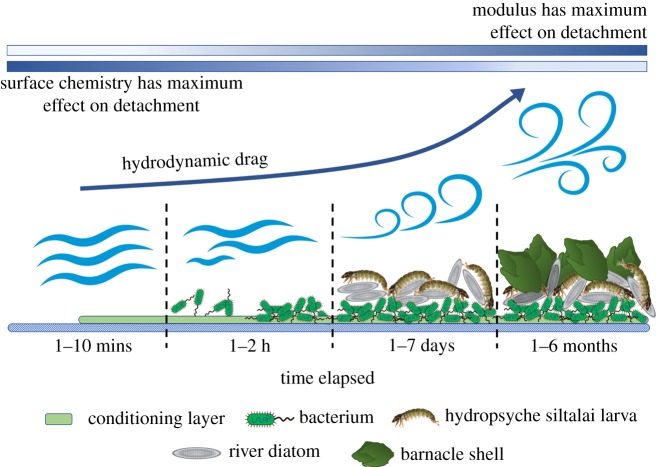Figure 9.
The marine fouling sequence observed on a surface underwater. Within the first few minutes, a layer of organic macro-molecules, known as the conditioning layer, is formed and fouls the surface [242,249,250]. After 1-2 h of submersion, planktonic bacteria colonizes the conditioning layer [250]. Within several days, the substrata become a habitat for larger unicellular organisms such as diatoms [205,242] followed by multicellular species of larvae, algae and algae spores (image licensed under https://creativecommons.org/licenses/by/3.0/deed.en). After several weeks, the surface experiences fouling from increasingly complex organisms such as tunicates, mussels and barnacles [205,251]. A consequence of fouling on a ship hull is the increased drag experienced by the vessel in motion which increases costs and extends downtime during hull maintenance [200].

